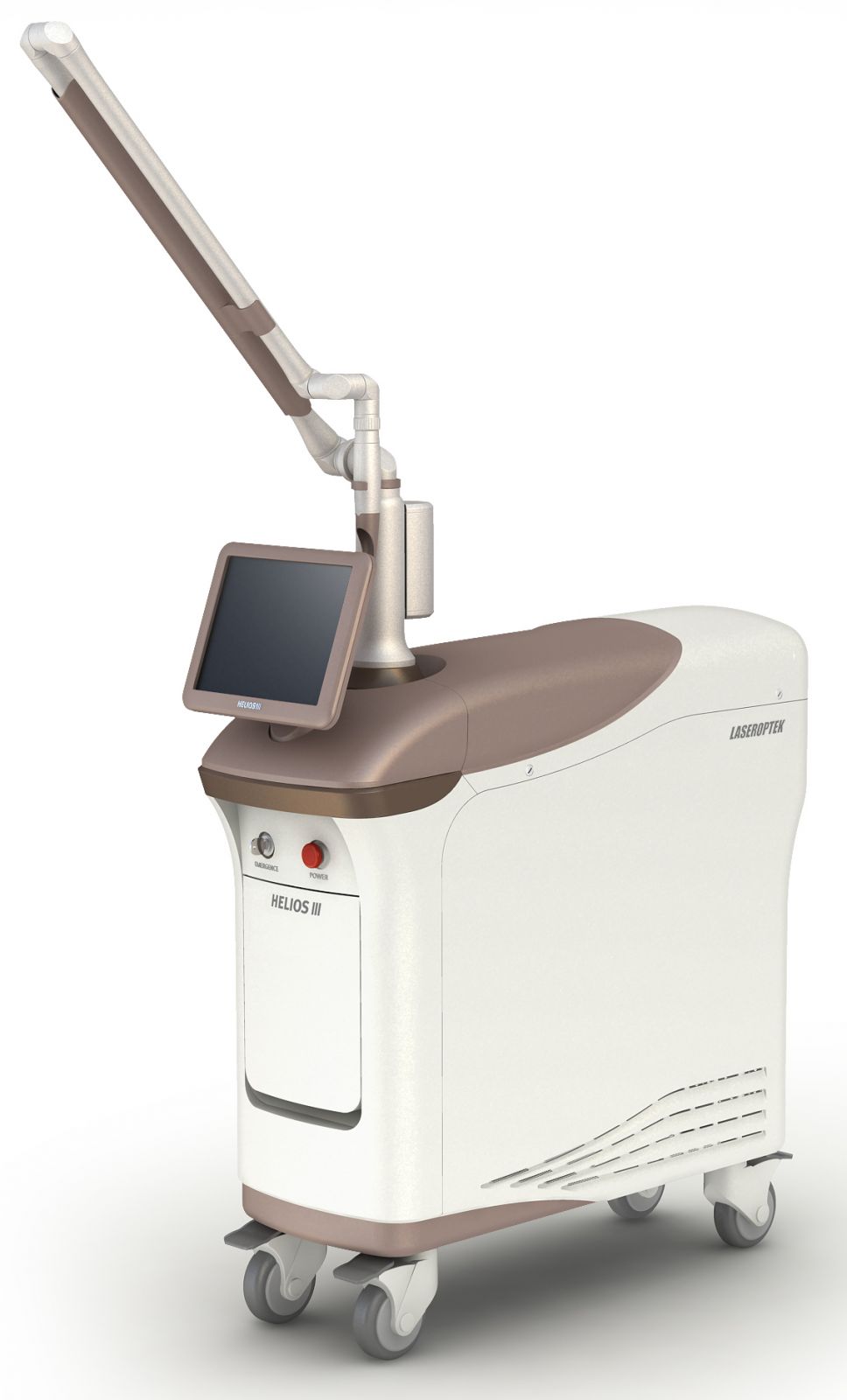
Four Handpieces and Consistent Output Improves Efficacy and Safety in Pigment Treatments
Why Choose the Q-switched Nd:YAG Laser for Pigment Treatment
The picosecond Laser was specifically developed to target tattoo lesions and has shown excellent efficacy in that respect. However, there are conflicting reviews on its efficacy in other types of pigments. Some clinicians using the picosecond Laser may not be fully convinced of its benefits. Melasma seems to improve at a slightly faster pace with a picosecond Laser compared to other types of Laser. However, melasma rarely improves with a single modality and requires combination therapy that should be customized to individual patients. Condering this, I think it would be a bit rash to purchase the picosecond Laser just for treating melasma.
The main reason is that picosecond Lasers are very expensive. Clinicians specializing in tattoo removal or trying to market themselves with latest devices may benefit from acquiring this new Laser. However, my practice falls in neither category, although we occasionally perform eyebrow tattoo removal.
Why I Chose the Helios Series
When it comes to energy-based treatments, side effects often stem from two types of bias; device-based bias and operator-based bias. Device-based bias refers to the inconsistency in the energy output of the device. The energy level shoots up for no reason despite regular maintenance. I can somewhat sense the drastic increase in energy output when the machine makes a different sound during irradiation or when erythema develops more quickly. Operator-based bias refers to the discrepancy in skill levels between operators. Literature recommends 2-3 passes but in actual practice, the doctor often performs more passes over darker lesions. This leads in accumulation of fluence, which then causes thermal damage and side effects.
Side effects from the Q-switched Nd:YAG Laser develop due to the above two biases, and the picosecond Laser is no exception. An important aspect to consider is that the Q-switched Nd:YAG Laser is widely used around the world, whereas the picosecond Laser is still too new to the market and has not yet experienced many cases of complications. Once the picosecond Laser becomes more common, it will inevitably suffer the same problems.
My choice of Laser in pigment treatments is the Helios Series. Helios devices feel less affected by the above mentioned bias compared to other Q-switched Nd:YAG Lasers. The four specialized handpieces (Zoom HP, Collimator HP, 1064nm Fractional HP, and 532nm Fractional HP) can be used to destroy pigments in both the epidermis and dermis with minimal side effects. In particular, I use the 532nm Fractional handpiece most frequently as it has excellent Laser delivery.
HELIOSⅡ/LOTUSⅡ/HYPERION – Manufacturer: LASEROPTEK(www.laseroptek.com)
Precautions
It is important to realize that the goal of melasma treatment should be management, not a cure. The treatment should be gradual and one should observe for and prevent side effects at each stage.
It is important to avoid an irradiation overlap during treatment. During a Laser toning procedure, I divide the face into subsections and move the handpiece slowly over each section. This helps to avoid the tendency to make more passes over a darker lesion. When moving onto another section, I can visibly see mild erythema developing along the endpoint of the completed section. I cover the entire face with one pass, which takes 2-3 minutes. This is a good interval before making a second pass using the same method.
Post Treatment Care
The pre- and post-treatment care is more important than the treatment itself. We start topical therapy 3-4 weeks before the Q-switched Nd:YAG Laser therapy. Also, a mild chemical peel is performed 5-10 minutes before Laser treatment to gently cleanse the face of excess keratin. I also use a cooler during the Laser irradiation to immediately cool the irradiated area. I perform a second cooling when erythema starts to develop and move onto a vitamin facial if the erythema is not severe. I also instruct my patients to apply a UV block and moisturizer.
Article/ Gwon Hyeseok (Tam Clinic)
-To be continued




















